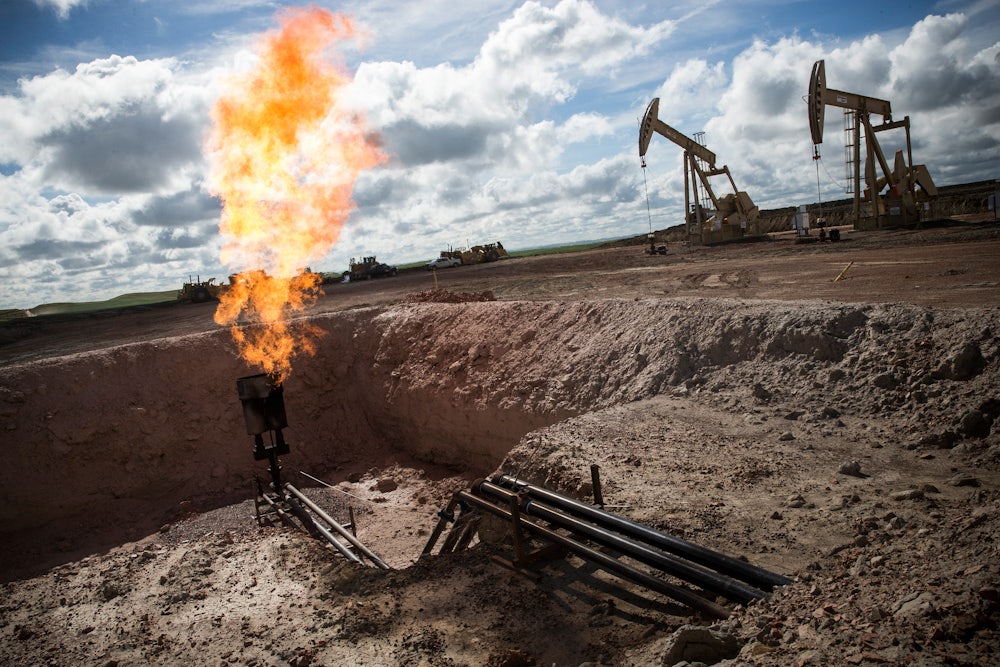What gets left behind when a major oil company opts to go net-zero? Just because greenhouse gas emissions move off a corporate balance sheet doesn’t mean they disappear. That’s the upshot of a lengthy new investigation by Bloomberg’s Rachel Adams-Heard.
The story looks at BP, which, as part of its ongoing and implausible rebranding as a low-carbon company, sold off long-standing assets in Alaska’s North Slope in 2019 to the privately held driller Hilcorp International. Months after taking over, Hilcorp ramped up production by 4.7 percent. Greenhouse gas emissions rose by 8.2 percent.
For BP that ballooning carbon footprint was out of sight and out of mind. The atmosphere doesn’t much care who’s responsible for the carbon that’s filling it up, though. And there are many, many Hilcorps lying in wait to snap up assets others sell off.
Capitalism does not provide a good answer to this problem. Each individual company is motivated to increase profits. BP is one of many firms that has decided the best way to do that in the long run is by painting itself a deeper shade of green, pleasing investors, who are keen on the zeitgeist of environmental, social, and governance, or ESG, metrics. Yet so long as the world runs on fossil fuels, there will be other companies who can profit from digging them up, who will buy up the reserves bigger companies see as a liability and drill them dry. There just isn’t much of a profit to be made in properly closing down extractive infrastructure or using it to store captured carbon. Hope among fossil fuel investors springs eternal, though, as evidenced by a passage in the Bloomberg feature:
“We anticipate the rise of the so-called decarbonization specialist operator,” says Accenture’s Rabley. A company that’s built out carbon-capture technology at scale could buy assets traditional oil companies no longer want. It could be a small outfit just like Hilcorp, only with an expertise in safely storing the carbon and methane from older wells.
“That would help greatly the narrative the supermajors are putting out,” Rabley says. “They can say they’re divesting them to a company that will steward them.”
No such company currently exists, at least not in a meaningful way.
Despite hopes that carbon capture and storage technology will decarbonize everything from steel to coal plants, 75 percent of commercially operational carbon storage outfits are only profitable because they’re using captured carbon to drill for even more fossil fuels, through a process known as enhanced oil recovery.
Walking away from fossil fuel assets carries its own risk for companies. There are an estimated 3.2 million orphan and abandoned oil and gas wells in the U.S., many of them spewing massive amounts of methane into the atmosphere. Bankruptcy courts have been a lucrative way for fossil fuel producers to walk away from obligations to plug wells and reclaim minelands. And the laws governing how much companies should contribute to cleanup costs haven’t been updated since the 1960s. Cash-strapped state and local governments have few funds to cover the billions of dollars in costs companies are skipping out on. At the current rate of remediation, a recent study from the Ohio River Valley Institute found it would take 900 years to plug America’s abandoned oil and gas wells.
It’s possible to imagine a program in which the federal government furnishes funds to state and local governments to plug those wells directly. Lacking the administrative support for direct hiring, that money might well make its way to any number of low-bid contractors—think Halliburton—to bring in workers from wherever they please, making whatever wages they please. Successfully plugging wells in the Ohio River Valley States (Ohio, Pennsylvania, West Virginia, and Kentucky) would create 15,151 jobs per year for 20 years.
But the federal government could also hire people directly. It could offer a modest buyout to flailing oil and gas companies who would otherwise be eager to skip out on labor and environmental obligations via bankruptcy courts, and then keep local workers with the relevant expertise on payroll to do different work, whether plugging old wells or making a more comprehensive registry of wells we don’t currently track.
There are plenty of public alternatives to entrusting companies with the all-important work of emissions reduction. But they require reckoning with the fact that fossil fuels are not long for this world—still a third rail for even progressive Democrats. Nationalizing fossil fuel assets would be a way to steward a managed decline in the public interest, ensuring abandoned rigs and reserves aren’t auctioned off to private sector vultures eager to pump them for all they’re worth with scant oversight. Storing captured carbon underground, as science fiction author Kim Stanley Robinson has suggested, should be treated like a public utility. While such sequestration already receives generous public support through existing tax credits and research funding, it could be decades before companies find it profitable enough to meet the gargantuan levels of demand that even conservative models suggest will be needed.
The private sector won’t voluntarily deliver the many moving pieces of decarbonization simply because it’s the right thing to do; it will do what’s profitable and nothing more. Despite fossil fuel companies’ recent spate of net-zero pledges, there’s no reason to trust them to deliver anything at all.








